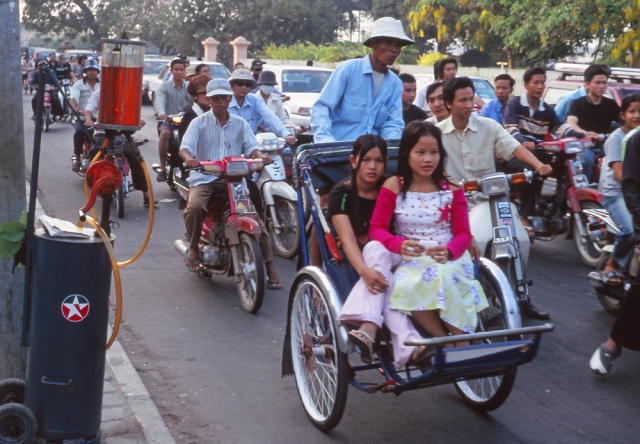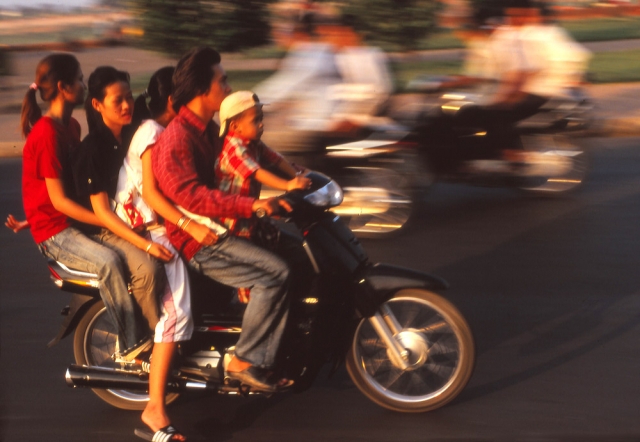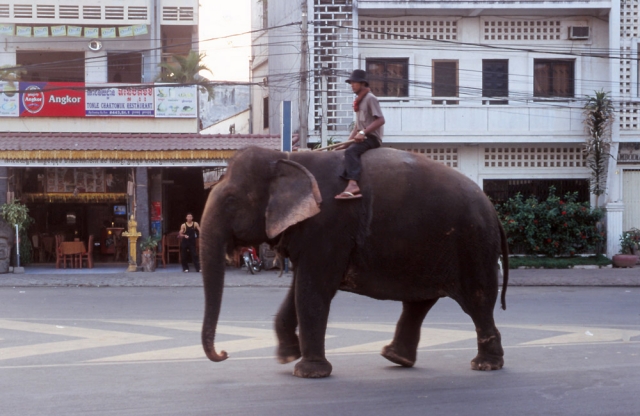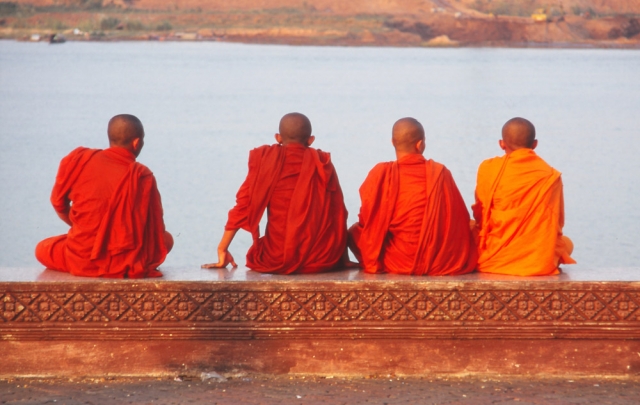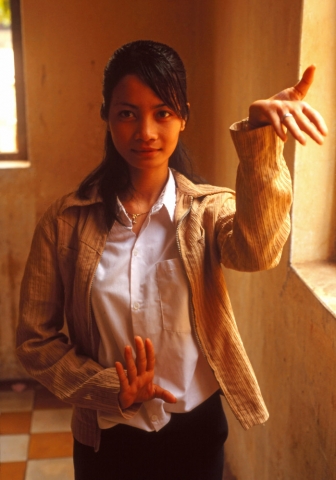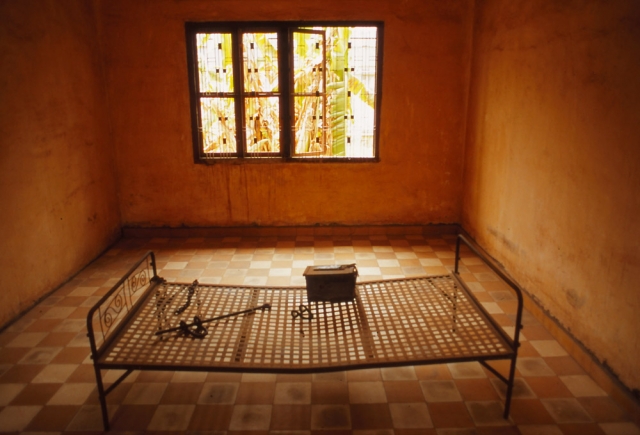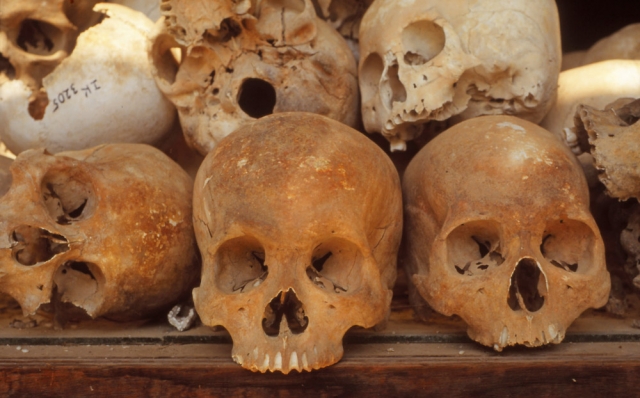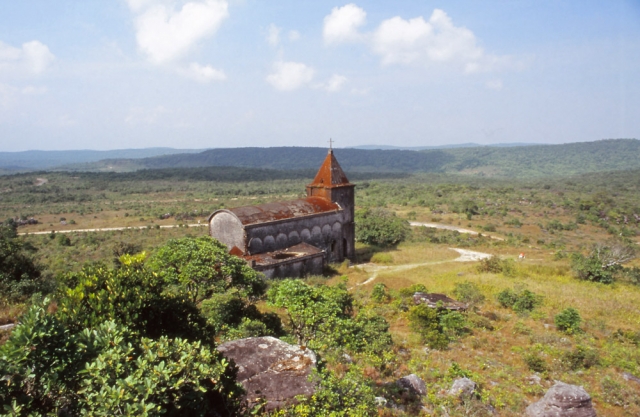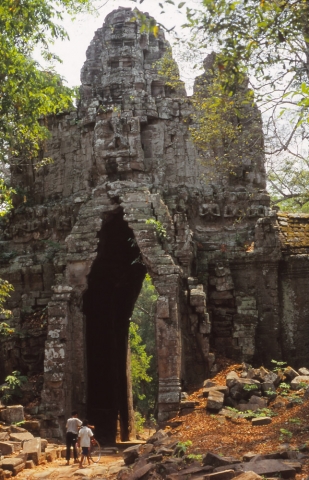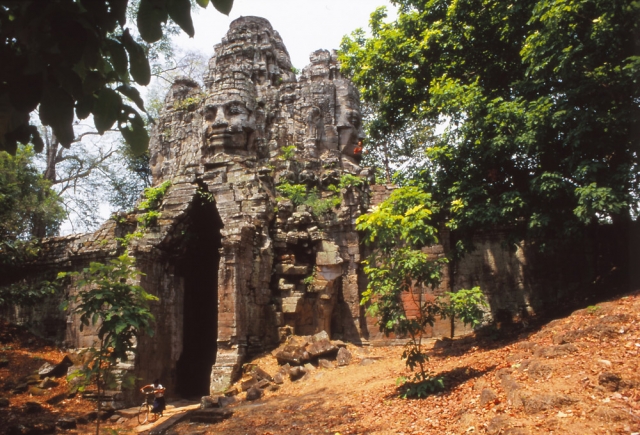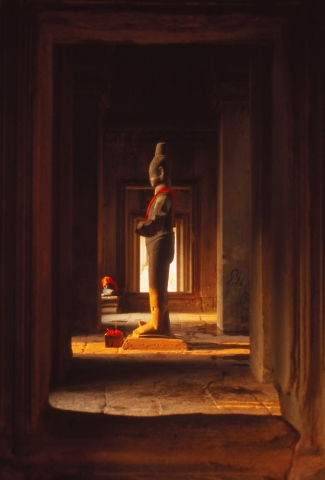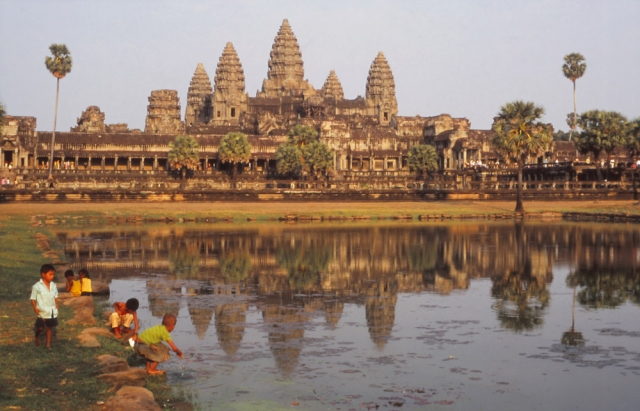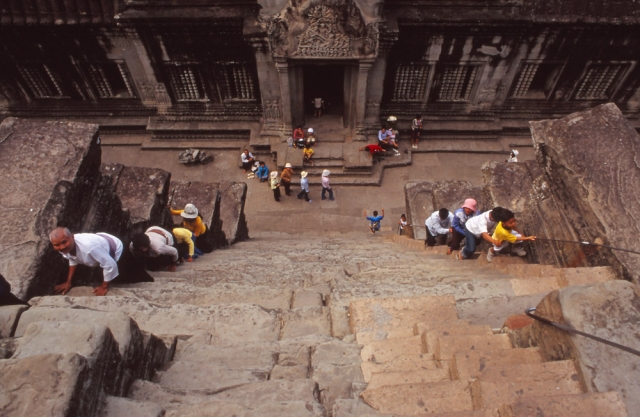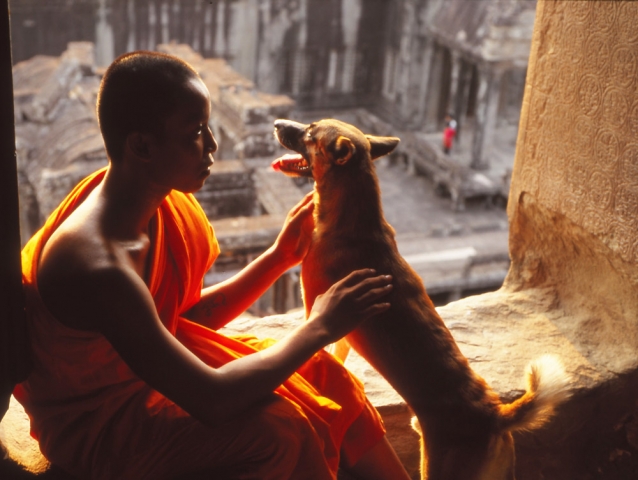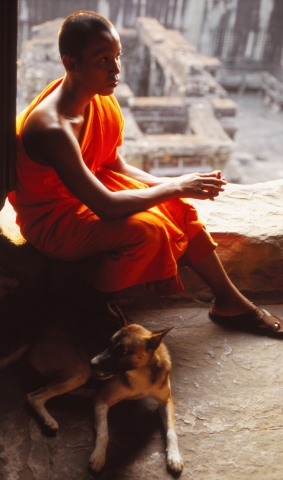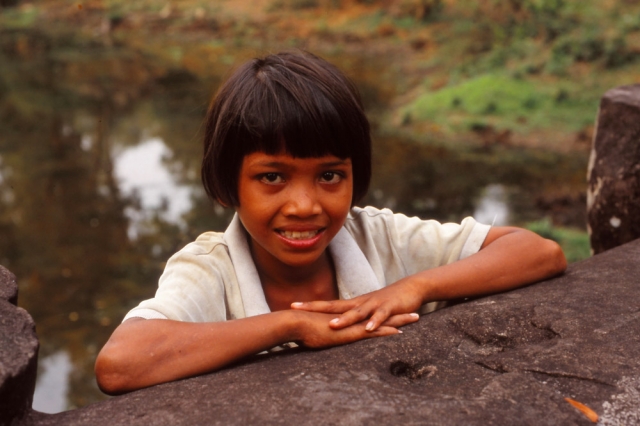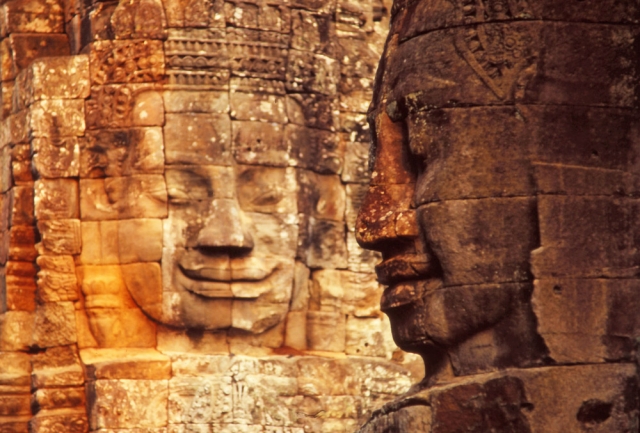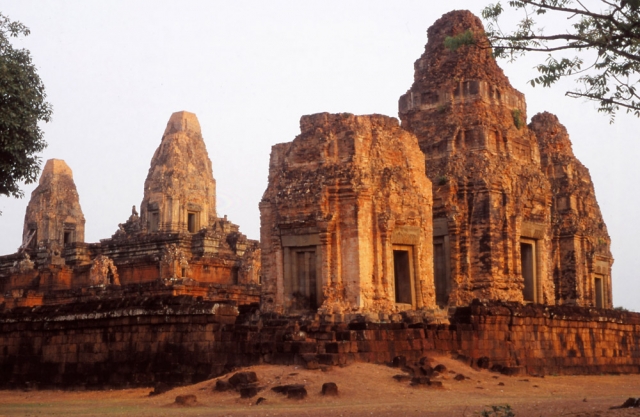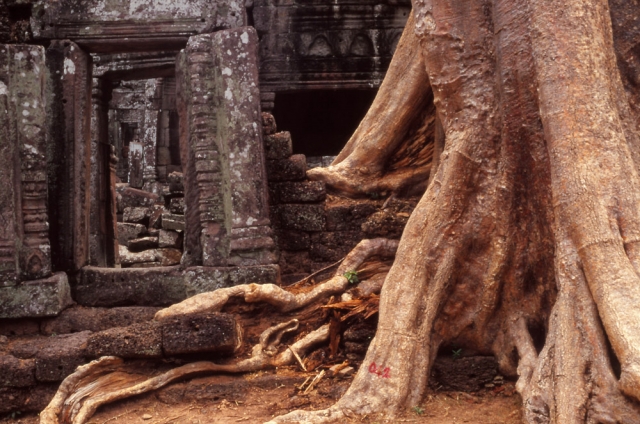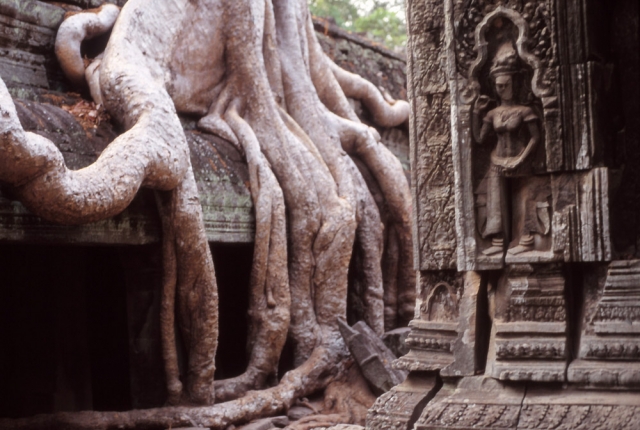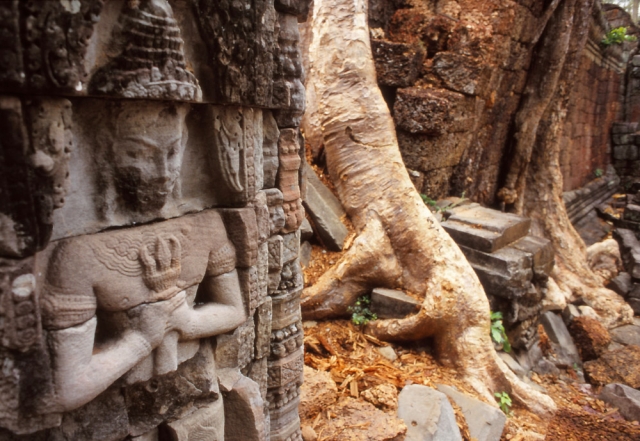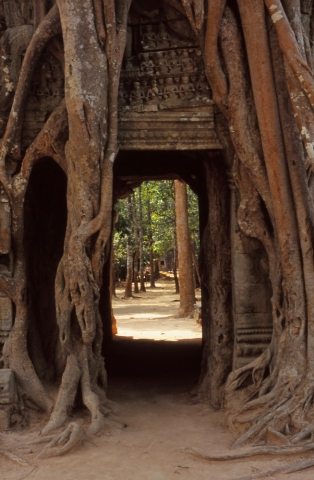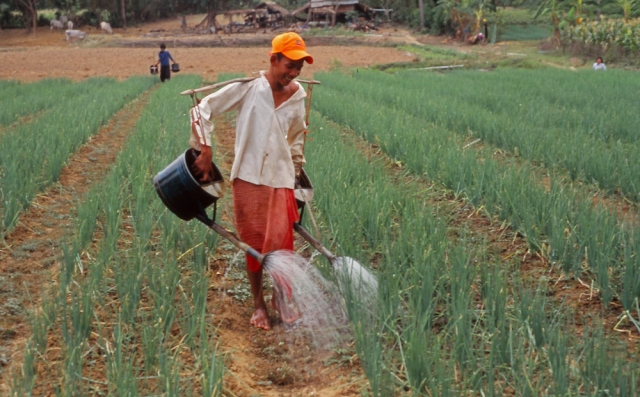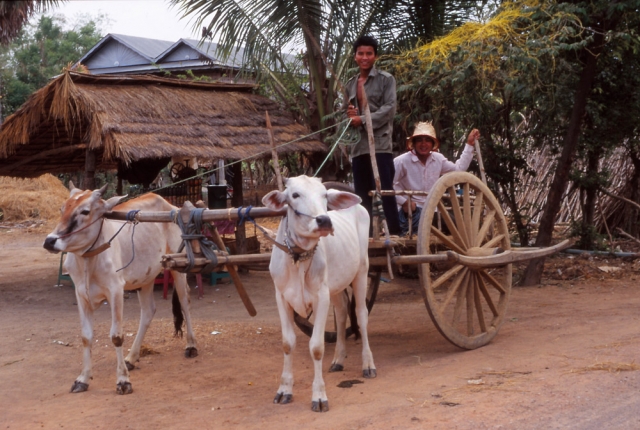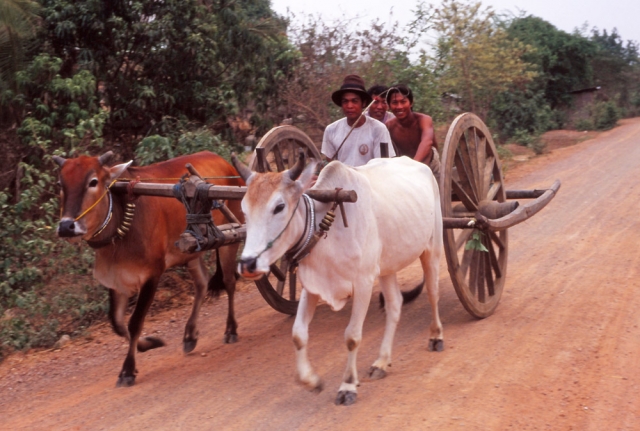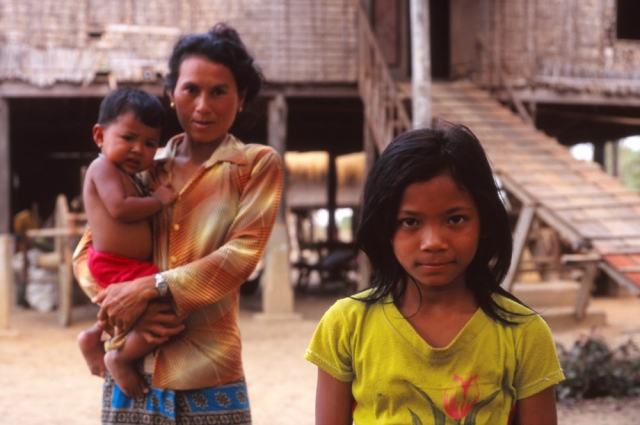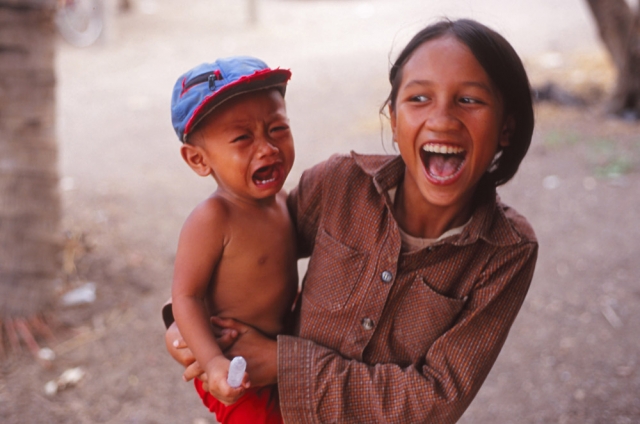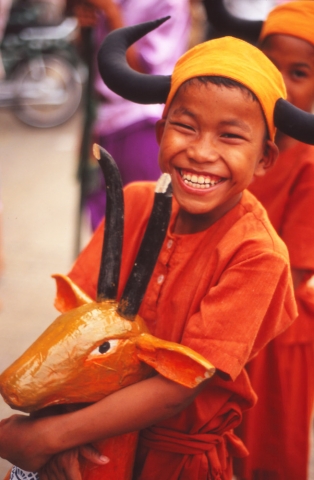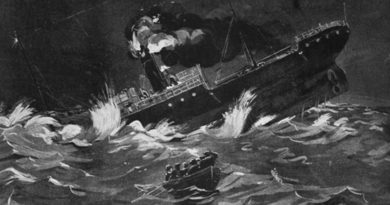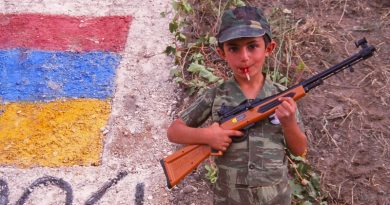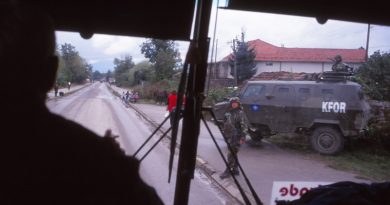Cambodia in pictures
| Travel in a time of coronavirus I started this blog as a celebration of travel and this crazy, fabulous planet, but with Covid-19 closing borders for months, possibly years, any new adventures are on hold for the foreseeable future. In the meantime I’ll be delving into my diaries and scanning my old travel slides to bring you some stories and photos from the past 25 years. |
Cambodia had been on by travel wishlist long before I finally got there in 2005, mostly because I wanted to see the great temple of Angkor Wat.
And what a temple it is.
Built 900 years ago it’s still the biggest religious monument on the planet, measuring 1.5km across, surrounded by a moat almost 200m wide and reached by a 500m-long stone causeway.
This “temple mountain” represents the entire universe with Mount Meru, the home of the gods, at the centre, surrounded by smaller peaks, continents (the courtyards) and oceans (the moat and ceremonial pools).
Symbolism is infused into every part of the complex. The terrifyingly steep steps to the highest level, for example, are a lesson in the difficulty of reaching heaven.
I knew some of that before I went to Cambodia. What I didn’t know was that Angkor Wat is just one of more than 1000 temples scattered through the fields and jungle around the modern-day city of Siem Reap.
Some temples are little more than piles of rubble but others rival Angkor Wat in size and beauty.
The stone towers of the Bayon, for example, are decorated with 216 giant, enigmatic faces; while at the impossibly romantic Ta Prohm orange-clad monks stroll through ruins engulfed by by the snaking roots of spong trees. Less well known, but just as impressive, the giant gates of Angkor Thom (“Great City”) once protected the world’s biggest pre-industrial city, making 12th century London look like a village.
But there’s a lot more to Cambodia than temples.
This Southeast Asian country about two-thirds the size of New Zealand has perhaps the most awful modern history of any nation on Earth.
You see it in the amputees maimed by landmines, the bones that still emerge from the soil of the Killing Fields, and the many more subtle scars left by the Khmer Rouge’s brutal 1970s regime.
The thing that impressed me most about Cambodia is the way its people have not been broken by that terrible past.
I found them energetic, entrepreneurial and determined to make a better future for themselves — like the young men who have turned a disused railway into a business opportunity by building their own “bamboo trains”.
You see the same spirit in the Cambodian refugees who arrived in New Zealand with nothing but now dominate this country’s bakeries and sweep the prizes in the national pie awards every year.
Like the other photos I’ve been posting lately these were taken on 35mm slide film then digitised on a cheap flatbed scanner. Despite my efforts I haven’t been able to get the colours and sharpness right.
If you want to see more pictures from this part of the world check out my photos of Laos, taken during the same trip through Southeast Asia.
Click on the previews to see the full-size images.


